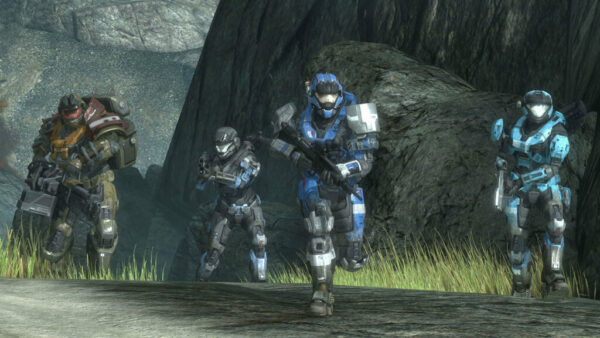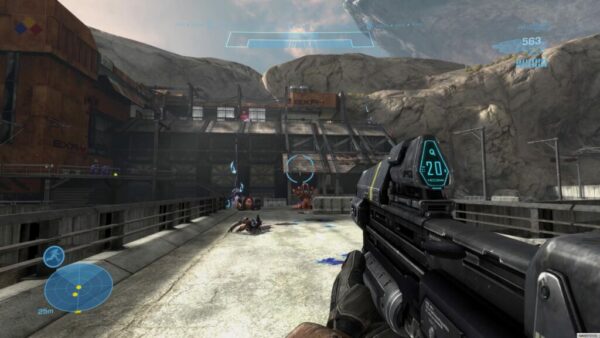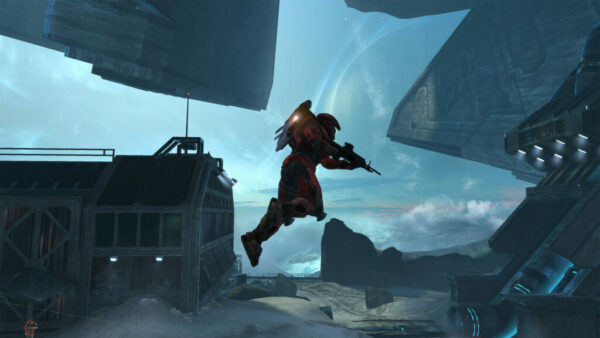Gaming has a rich history that spans multiple decades. To this end, The Last Word on Gaming Backlog is a series that looks back on titles across all generations. From the golden 8-bit era to the landscape-changing 64-bit scene and beyond, The LWOG Backlog’s aim is history. It’s the storyline beginning of a legendary franchise – today, we take a look at the gripping first-person shooter known as Halo Reach.
Halo Reach – An Overview

Halo is among the most prolific video game franchises. Beginning in 2001 on the original Xbox, the Halo series captured the imaginations of gamers around the world. This is true for not only the series’ multiplayer community, but its lore as well. Make no mistake about it: there is more to this series than simply aiming and shooting. There is no shortage of thematic elements and gripping narrative, and when discussing examples of this, few stand out like Halo Reach, originally released on Xbox 360 on September 14, 2010, developed by Bungie, and published by Microsoft Game Studios. It would go on to be released on subsequent platforms, including Xbox One, Xbox Series X/S, and PC, in the years that followed.
Before diving deep into Halo Reach, it’s important to note that this piece comes from the perspective of a new fan. Prior to digging into Halo: The Master Chief Collection earlier this month, I had never played a Halo game. I never disliked the series; rather, there were so many other games that had my attention that Halo went overlooked for years. Nostalgia will be absent from this deep dive. Keep this in mind as the following observations are noted. Does Halo Reach hold up? Let’s take a closer look.
Story
Halo: Reach takes place days before the original title in the franchise, Halo: Combat Evolved. The United Nations Space Command has been at war with the Covenant, a fleet of aliens driven to exterminate the human race. With the demise of several human-run colonies, Reach is the only one left. This is where a group known as Noble Team comes into play. A group of soldiers, or Spartans, Noble Team attempts to stop the Covenant by any means. The player takes control of Noble Six, a newcomer to the group, as they aid in the battle against these alien foes.
To say that Halo Reach elicits dread would be an understatement. Halo: Combat Evolved’s story revolves around UNSC’s continued war against the Covenant, one that they couldn’t overcome in the past. Longtime players know how Reach’s story will play out, and no matter what actions they take, the result will be the same. This makes the player’s interactions with their fellow Noble Team members all the more impactful. Nonetheless, the team pushes onward, serving as a collective shield against an increasingly helpless human race.
Gameplay

Halo: Reach is a first-person shooter with a campaign broken up into several missions. Alongside Noble Team, the player must complete said missions, fighting alongside soldiers and aiding civilians. A seemingly endless rotation of weapons, a recharging shield, a motion tracker – these are all staples of Halo’s gameplay and they are all present in Reach.
Playing through Halo: Reach for the first time, I found myself enjoying the utilization of different abilities found within the game’s missions. Not unlike weapons, these can be picked up and swapped during gameplay. There are useful ones, such as a jetpack that lets the player fly for a limited time, but more often than not, I relied on the sprint to move around the field faster. Noble Six may not boast the same raw power as the series’ flagship protagonist, Master Chief, but he’s every bit as brave, steadfast, and resourceful on the battlefield.
Missions are varied from a gameplay standpoint, too. There are times when Noble Six must board an aircraft carrier, utilizing a turret to take on grounded and airborne threats alike. Reach also introduced intergalactic dogfights, tasking the player with battling foes in outer space. Gameplay seldom feels stale in Reach and it only makes every mission that much more anticipated.
Presentation (Graphics and Sound)

If there is any indication that Halo Reach is a more grounded experience in the franchise, look no further than its visuals. Generally speaking, Halo games feature vibrant colors, its hues all but popping right off the TV screen or computer monitor. Reach, on the other hand, features what can best be described as a more realistic, grounded color palette. The series’ art style is present, of course, and does not sacrifice detail. However, by taking one look at this game, it’s fair to assume that it won’t end on a particularly upbeat tone.
Halo Reach is remarkable from an audio standpoint, too. Special credit must be given to this game’s composers, Martin O’Donnell and Michael Salvatori, both mainstays of the franchise. Historically, Halo soundtracks are triumphant, making the player feel like they’re an unstoppable, legendary powerhouse. By comparison, Reach’s soundtrack is moodier and more somber than prior releases. This game’s universe is on the brink of collapse and its score perfectly reflects this. This isn’t to say that there aren’t more bombastic, energizing tracks – “Tip of the Spear” is my personal favorite – but the overall score fits Reach like a glove.
Replayability
In terms of single-player gameplay, Halo Reach is broken up into 11 missions. With this in mind, the player may see the end credits in up to 10 hours, which is a substantial adventure in and of itself. However, one must consider a few factors here, including the difficulty; playing on Legendary is incredibly tense and will test anyone, resulting in more than a few mission restarts. There is also quite a bit to explore throughout the aforementioned missions, meaning that if you pride yourself on combing each area as thoroughly as possible, Reach can last you for quite some time.
This doesn’t even begin to touch on the multiplayer, which the Halo series is famous for. Capture the Flag is self-explanatory and tends to be the one where strategy is most essential. However, there is also Invasion, which pits squads against each other as they battle for territories on the map. These are just a few modes to dive into. Furthermore, depending on whether a player takes on the role of a Spartan or Elite, the way the game plays will be somewhat different. Multiplayer isn’t necessary to play Reach, but for those that consider themselves competitive players, there’s plenty to enjoy.
In Closing
In what should be a surprise to a few, Halo Reach reviewed incredibly well following its release. Critics praised the game for taking everything that made the previous games engaging, ensuring that it felt familiar to long-time players. It sold incredibly well out of the gate as well, generating $200 million during its first day on digital and store shelves. Altogether, on the Xbox 360, it moved close to 10 million units. However, as history has shown, its life didn’t end on the system in question.
In December 2019, Halo: The Master Chief Collection was released on Xbox One and PC, later optimized for Xbox Series X/S. This collection consists of 6 titles, Halo: Reach among them. It’s also the first choice listed in the Single Player option, due to the fact that it takes place first chronologically. Like the other games in the collection, Reach saw a graphical upgrade, featuring sharper visuals. The presentation was further bolstered on the Xbox Series platforms, which was how I first experienced the franchise. Whether on modern consoles or PC, Halo Reach is an experience that stays with you.
Stay tuned to Last Word on Gaming for all the latest gaming news and reviews. Follow us on Facebook, Twitter, and join our Discord Server.
